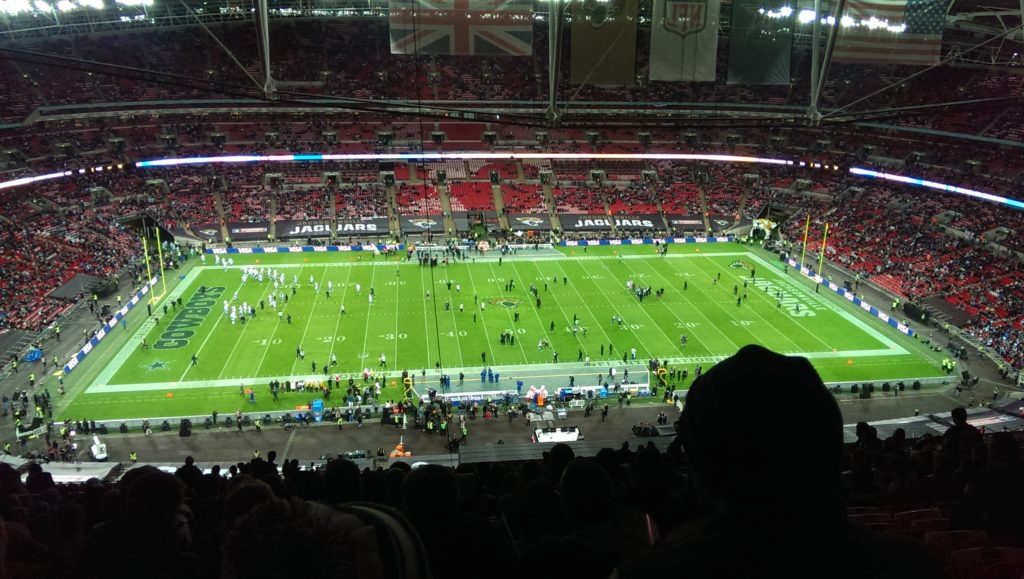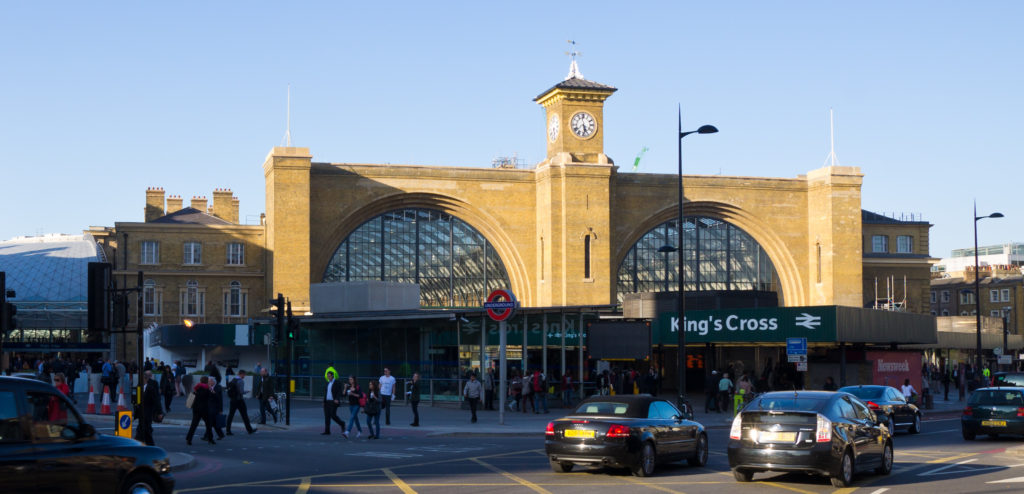
Wembley recently held its third and final NFL match of the season in October. This is nothing new, as the London venue has become the home of American Football in the U.K, hosting at least one game annually since 2007. The success of these regular games has increased year on year, and senior NFL executive Mark Waller has even said himself that the matches have gone from novelties to authentic parts of the NFL calendar. This further suggests that the demand for a new football team based out of London to enter the NFL exists.
The second match at Wembley in 2018 saw the Chargers only just beat the Titans, 20-19. The following week London experienced the Eagles, who succumbed to a stunning comeback at the hands of the Panthers the week before, beat the Jags in front of a record-breaking crowd of over 85,000.
It really doesn’t look like the NFL will be leaving London in the coming years, especially with Tottenham Hotspur’s new stadium, which is set to be an additional venue to host football, due to be completed this year. So with it now being a seemingly permanent fixture in football, it’s about time we found out a little more about the unique Wembley Stadium.
A brief history of Wembley
Those younger fans will think of Wembley as a new, state-of-the-art stadium. That it is. But Wembley as a venue has existed since 1923. The ‘Old Wembley’ was closed in 2000 and subsequently demolished three years later to make way for the existing stadium. It resides in the same location, but holds a greater capacity and is (obviously) far more modern and offers a lot more in terms of facilities.
Where a pair of towers stood on top of the Old Wembley, the defining feature of the new stadium is undoubtedly its 133-metre arch. This is not only a design built for appearance, but actually serves the purpose of holding up the retractable roof.
Wembley also boasts an impressive range of facilities inside the stadium. This includes 98 kitchens, 8 restaurants, 34 bars, 2618 toilets, 26 elevators and 30 escalators. Noticeably, there are two giant screens at either end of the pitch as well. These are said to be the size of 600 domestic televisions.
Wembley’s location put into context
For the average American who has never set foot in London, it can be quite difficult to imagine where everything is in context to one another. Hundreds of places are heard in sports, movies and in the news, but unless you are a frequent visitor or even live in London, they aren’t going to mean too much.
So, for those perhaps traveling for the first time to the stadium, or even those who are simply interested to know where it is, here is the answer. Most of the famous London landmarks; the London Eye, Buckingham Palace, Oxford Street, Big Ben etc. are all within the City of London – the very centre of the city. From there, there’s an array of suburbs branching out, consisting of different parts of London, but called separate areas e.g. London Borough of Brent (Wembley’s Borough).
Wembley is about a 20/25 minute tube (subway) ride away from the centre of London’s centre, slightly out towards the north west of the city.
Wembley’s accessibility
Being England’s national stadium, it is of course well connected. From Central London, there are multiple ways of getting to the stadium. From King’s Cross, you can take the Metropolitan Line (purple) straight to Wembley (Wembley Park), taking 18 minutes in total.

Another station that services the stadium is Wembley Central. This is part of the Overground and connects major stations such as Euston, Willesden Junction and Clapham Junction directly. A number of bus routes also provide access to Wembley Stadium, but the subway is by far the most efficient method of travel.
NFL and Wembley
The New Wembley that we know today opened in 2007 and began hosting the NFL immediately. However, the Old Wembley did see a faIr bit of American Football action as well. From 1986 to 1993, it held one NFL game each year. The first ever game played there was in 1983.
With American Football fields being 160 x 360 feet in area, adaptations to the regular 213 x 357 soccer pitch is needed beforehand. These changes are evident when Wembley’s purpose is switched back used for soccer, with the lines and markings still visible. It’s not all about the pitch in football, a lot of work goes on off the field as well. But Wembley also boasts one of the best and well-maintained pitches around – with it being a hybrid of real grass and artificial turf.

